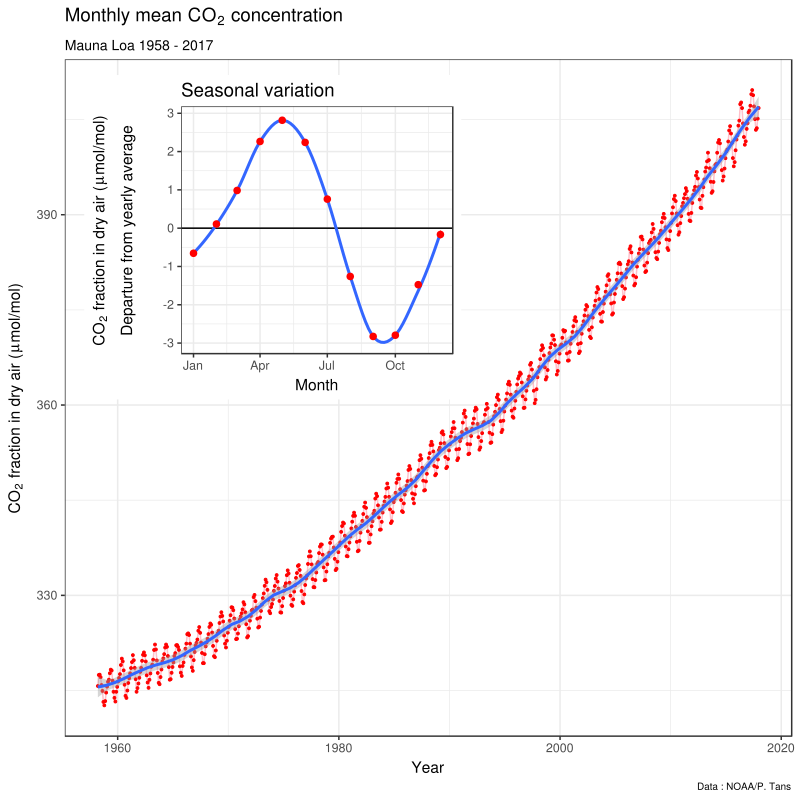I wonder what you make of this “Keeling Curve.” I especially wonder what you make of the inset–which can be seen to oscillate on the actual graph of this ‘curve’ below the inset.
This might be a very teachable moment.
I await your brilliant responses.
